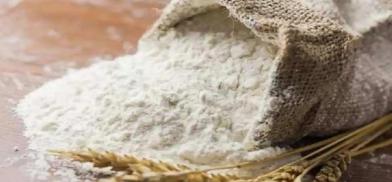Three South Asian nations - and common factors in their economic downslide
In post-colonial South Asia, the British who ruled and plundered the region also sowed the seeds of ‘divide and rule’, dividing the people along Hindu-Muslim or Sinhala-Tamil lines. Partition of the subcontinent was also a result of the same policy.

Pakistan is currently in the grip of a massive economic crisis. Wheat flour is selling at PKR 150 per kg. (Pakistan rupee PKR). The staple diet roti is PKR 30 in a country where the average daily earning is PKR 500, with an average household needing close to 10 rotis a day. The US dollar is close to PKR 230. Summing up the economic plight of Pakistan, John Ciorciari, professor at Michigan’s School of Public Policy, says. “Pakistan faces a severe economic crisis and clearly requires external support. Foreign exchange reserves are at dangerously low levels—enough to pay for only a few weeks’ worth of imports. Inflation is at its highest levels in decades, growth is sagging and the central bank has raised interest rates sharply to address a weak currency.”
No doubt this worsening is partly precipitated by the massive floods in Pakistan. As such also the basic structure of the economy of Pakistan has been on a weak wicket, with military dominance, islamisation of politics, and US dictates influencing the total scenario.
At the time of independence, Pakistan’s Founder-Governor General Mohammad Ali Jinnah gave one of the best definitions of a secular state in his 11th August Constituent Assembly speech, “If you change your past and work together in a spirit that every one of you, no matter to what community he belongs, no matter what relations he had with you in the past, no matter what is his color, caste or creed is first, second and last a citizen of this State with equal rights, privileges and obligations, there will be no end to the progress you will make.” This principle was not to last for long and the fundamentalist elements around him took over after his death.
Persecution of Hindus, Christians, Shias and Kadianis (these last two are Muslim sects) began over a period of time. The dominance of religion in politics, the weak infrastructure of agriculture, industry remaining on the margins, and health and education having low priority were compounding factors in the present state of affairs. The domination of the military and fundamentalism in politics had different priorities and were major factors in the inability of the state to cope with the economic challenges.
The Sri Lankan crisis
No two cases are exactly similar; still some generalizations can be drawn. In the case of Sri Lanka, majoritarian politics of the Sinhala Buddhist community made the minority Hindu Tamils their first target, followed by the persecution of Muslims and Christians. The military was in a commanding position and and high-handed decisions like spending fortunes on Rajpaksa Airport near Hambantota port and stopping the import of fertilizers led to the big disaster just eight months ago. The food crisis and the rising prices led to the people's uprising. Sri Lanka did begin as a democracy but the pressure of ethnic (also overlapping religious) issues dominated the scene to disenfranchise the Hindus (Tamils) and others in due course.
Rohini Hensman, a scholar-activist of Sri Lankan origin, gives a very comprehensive account of the roots of ethnic-religious divides on which major political parties harped. In due course, this gave rise to the anti-people; autocratic regime of Mahinda Rajpaksa and his brother Gotabaya Rajapaksa in particular. (Rohini Hensman, Nightmare’s End, 13th June 2022, New Left Review).
In today's India communal elements are boasting that it is due to Prime Minister Narendra Modi that India is not having such a crisis. Surely the crisis in India is not of the proportion of what Pakistan is currently facing or what Sri Lanka witnessed. Still the rising prices of commodities are breaking the back of the poor and even the middle class. The Indian rupee has seen a free fall against the US dollar and now it stands at INR 83 against the dollar. Unemployment is an all-time high, and the GDP is on the lower side. The Oxfam report shows the widening gulf between the rich and poor. The Muslim minority and Christian minorities are under constant intimidation with their marginalization best reflected in what India’s celebrated ex-police chief Julio Ribeiro said, “Today, in my 86th year, I feel threatened, not wanted, reduced to a stranger in my own country. The same category of citizens who had put their trust in me to rescue them from a force they could not comprehend have now come out of the woodwork to condemn me for practicing a religion that is different from theirs. I am not an Indian anymore, at least in the eyes of the proponents of the Hindu Rashtra.”
The Indian downslide
In contrast to both the neighbors, India began on the solid wicket of secularism and focused on Industries, irrigation, fertilizers, health facilities (primary health centers) and education. It also endeavored to set up the premier places of higher education, the IITs, IIMs along with research institutions that can compete with global excellence, BARC, DRDO, INCOSPAR, ISRO, and CSIR among others. Undoubtedly there were some flaws in the initial planning like over-emphasis on heavy industry and higher education, yet the solid infrastructure was laid. A scientific temper was mandated even through the Constitution.
It is from the decade of 1980s that the communal forces have reared their ugly head in a powerful way and are currently the most dominating political factor, which is leading to our downslide in most of the areas, irrespective of the claims that "achchhe din" (good days) have arrived, irrespective of the tall claims of "sabka saath" (taking everyone along). In the last eight years, GDP has come down from 7.29 per cent to 4.72 per cent, average unemployment rose from 5.5 per cent to 7.1 per cent, cumulative NPAs rose from INR 5 lakh crore to INR 18.2 lakh crore, export growth has come down from 69 per cent to 6.4 per cent, the rupee has weakened against dollar, from INR 59 to INR 83. And the attack on scientific temper is becoming stronger.
In post-colonial South Asia, the British who ruled and plundered the region also sowed the seeds of ‘divide and rule’, dividing the people along Hindu-Muslim or Sinhala-Tamil lines. Partition of the subcontinent was also a result of the same policy. Among India and Pakistan, India embarked on the path of a modern nation-state, while Pakistan soon fell into the grip of divisive politics. While earlier many Pakistanis looked up to India as a role model, for the last three decades in particular India also seems to be following the path that Pakistan followed. As the late Pakistani poetess Fahmida Riaz, in the aftermath of the Babri Masjid demolition, so aptly put "Tum Bilkul Hum Jaise Nikle" (You also turned out to be like us!)
(The writer, a former IIT Bombay professor, is Chairman, Centre for Study of Society and Secularism, Mumbai. Views are personal.)










Post a Comment